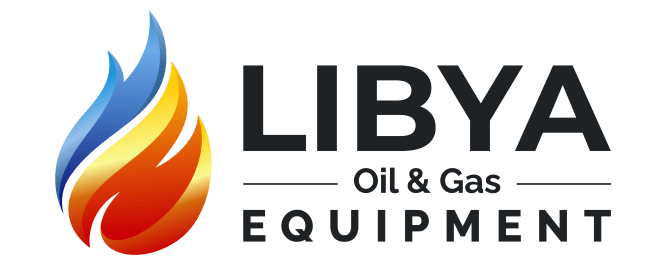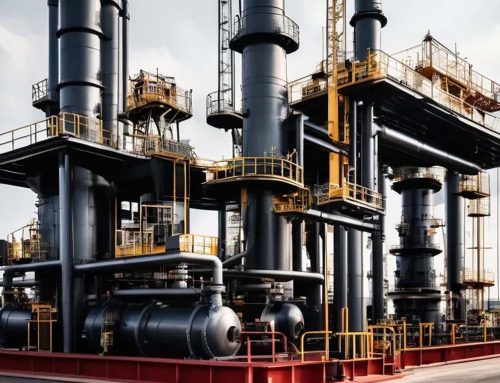
Technological Advancements Libya’s Oil and Gas Sector
Technology: Libya Oil and Gas Sector
The oil and gas industry companies in Libya are faced with so many problems on one side-they have political instability, they face underdeveloped infrastructure, and they need to work productively. Technically, technology offers a very good route towards production and operation enhancement. New technologies that could include automated processes such as artificial intelligence (AI), the Internet of Things (IoT), and automation could transform this industry found tremendously. The present write-up will investigate how advanced technologies speak to an audience in the oil and gas industry in Libya. Discover Our Company Libya Oil And Gas Equipment
AI: Optimal Exploration and Production
AI is stirring the oil and gas industry companies, the oil and gas company especially in the area of exploration and production.
AI interpretation of seismic data:
Being a good predictor for most situations, AI is also used in equipment maintenance. Analyzing data, it is able to predict before onset when the equipment would fail, therefore reducing the amount of time it would be down. Companies have reported improvements of as much as 35-40 percent in maintenance efficiency by AI.
Predictive maintenance:
Predictive maintenance plays a vital role in ensuring effective equipment maintenance by the predictive capabilities of AI. By understanding data, AI can predict failures among equipment before they happen, thus minimizing downtime. The few companies in Libya employing predictive maintenance methods reported a decline of about 20% in downtime, implying increased operational effectiveness.
Reservoir Simulation and Optimization:
AI is another powerhouse of perfection when it comes to reservoir modeling. This allows for a better production strategy, which leads to increased recovery. With this AI simulation, companies can optimize extraction processes and, accordingly, productivity. Some of the case studies show that advanced simulation might increase recovery rates by up to 15%.
IoT: Interface and Control Booster
The IoT modernizes the oil and gas field with connectivity and monitoring.
Real-time monitoring data acquisition:
The IoT sensors allow room for real-time data about pressure, temperature, and flow rates. Such live production data can give better visibility and higher quality in the decisions made. As research shows, it is possible to improve the efficiency of an operation by as much as 25% with such real-time measurements, thus significantly improving safety and performance all along the operation.
Remote operation and control:
Remote monitoring and control of oil and gas facilities have become possible through the IoT. This is not just about safety, but also operational costs that have been reduced considerably. Remote operations have also been stated to save as much as 40% in costs by taking care of safety.
Pipeline integrity management:
One of the important features of pipeline integrity monitoring is to ensure that there are no leaks in pipelines. Internet-enabled sensors can keep on monitoring pipelines and notify possible failures ahead of time. Leak casualties invariably fall by more than 30% for companies that use advanced pipeline monitoring systems.
Automation: Increasing Efficiency and Safety
Automation is revolutionizing how oil and gas industry companies operate, increasing both efficiency and safety.
Automated drilling and production processes:
The automations of the drilling processes have sped up operation and improved safety. This innovation decreases the uncertainty of humans and increases precision. Automated drilling systems speed up drilling pace by an average of 50%, and cut accident rates as much as 40%.
Robotics and automation in maintenance:
Hazardous environments become the operational bases for robots, thereby increasing worker safety. Such machines are able to work under high-risk conditions, reducing the chance for an accident. Firms that have deployed robots for maintenance purposes report 60 percent less accident cases that employ traditional methods.
Autonomous vehicles and drones :
Drones and autonomous vehicles are gaining traction in inspection and transportation activities across oil fields. All these new gadgets are a boost to efficiency but also have a vast increase in safety and cost effectiveness. Many organizations have reported that the use of drones in operations would minimize inspection time by 70% so that they can promptly respond to problems.
Cybersecurity in the Digital Oilfield
Cybersecurity in a Digital Oilfield Created at cyberspace. Growth and improvement in technologies simply make it the most important topic today.

Protecting critical infrastructure:
While digital oilfield creates benefits, it also opens the infrastructure to cyber vulnerabilities. The level of protection required for the infrastructure from cyber-attack by any such attacks must be as it has many threats from strong cybersecurity that could disrupt your operations, providing an infrastructure security backbone.
Data security and privacy:
Sensitive data gets generated due to disparate technologies, and safeguarding that data becomes a challenge. Organisations should hence enforce strict data security regimes for privacy and compliance.
Regulatory compliance
Companies operating in the sector must comply with cybersecurity regulations. This is not only but also to strengthen the trust of stakeholders and customers in the organizations.
Challenges and Future Outlook
Though technology has a bright future, several challenges remain.
Infrastructure development:
For the technologies to work, Libya must develop better infrastructures, such as internet access and reliable power grids. The use of modern advancements will not be full.
Skills gap and workforce development:
A considerable gap exists within the workforce in terms of skills. Thus, training programs should be seen as measures to equip employees with the skills required to Adapting to new technologies. Such actions provide guaranteed success in the long run.
Government policies and regulations:
Promoting the entrepreneurship of innovation has also to do with the adoption of such government policy along with investment in new technologies. The regulation must mirror with industry’s requirement to achieve effective and safer use.
Conclusion
To summarize, Libya’s oil and gas industry is being transformed by AI, IoT, and automation. These technologies improve efficiency, safety, and production capabilities. Under the right infrastructure and training initiatives, Libya’s oil and gas industry companies can really capitalize on the advantages of these developments as the industry positions itself for a brighter, more sustainable future.









